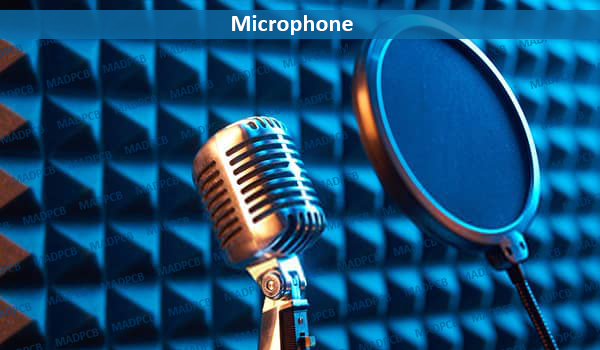What’s a Microphone?
A Microphone, colloquially called a mic or mike (/maɪk/), is an electroacoustic transducer that converts sound into an electrical signal. It converts sound into a small electrical current. Sound waves hit a diaphragm that vibrates, moving a magnet near a coil. In some designs, the coil moves within a magnet.

Microphone
Microphones are used in many applications such as telephones, hearing aids, public address systems for concert halls and public events, motion picture production, live and recorded audio engineering, sound recording, two-way radios, megaphones, radio and television broadcasting. They are also used in computers for recording voice, speech recognition, VoIP, and for non-acoustic purposes such as ultrasonic sensors or knock sensors.
Several types of microphones are used today, which employ different methods to convert the air pressure variations of a sound wave to an electrical signal. The most common are the dynamic mic, which uses a coil of wire suspended in a magnetic field; the condenser microphone, which uses the vibrating diaphragm as a capacitor plate; and the contact microphone, which uses a crystal of piezoelectric material. Microphones typically need to be connected to a preamplifier before the signal can be recorded or reproduced.
The sensitive transducer element of a microphone is called its element or capsule. Sound is first converted to mechanical motion by means of a diaphragm, the motion of which is then converted to an electrical signal. A complete microphone also includes a housing, some means of bringing the signal from the element to other equipment, and often an electronic circuit to adapt the output of the capsule to the equipment being driven. A wireless mic contains a radio transmitter.
Microphones are categorized by their transducer principle, such as condenser, dynamic, etc., and by their directional characteristics. Sometimes other characteristics such as diaphragm size, intended use or orientation of the principal sound input to the principal axis (end- or side-address) of the microphone are used to describe the microphone.
